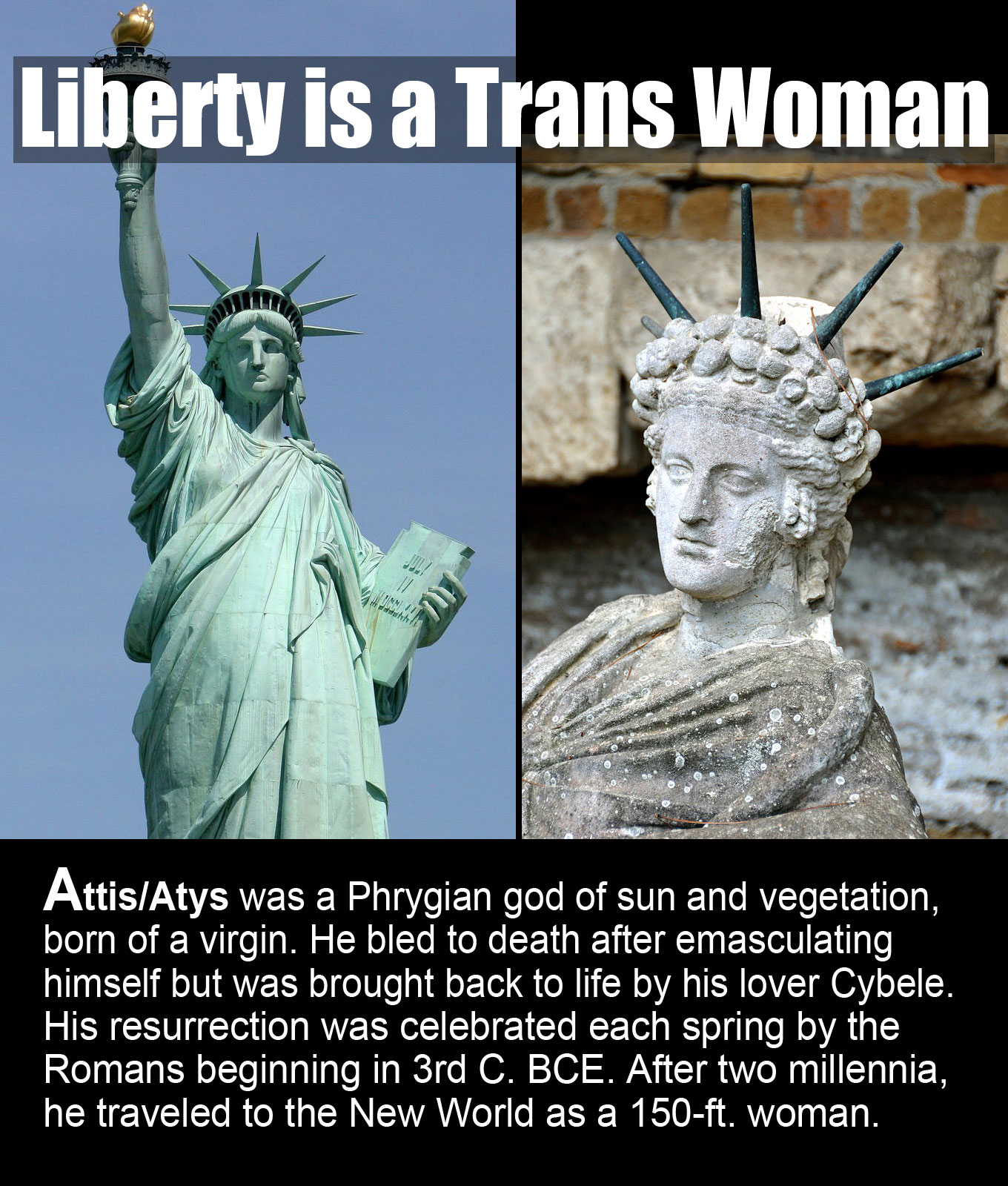The sun
is a goddess in Japan. When I learned of the Baltic sun goddess Saulé, I
searched for other female sun deities: the Celtic Sul, the Germanic Sól,
Wurusemu
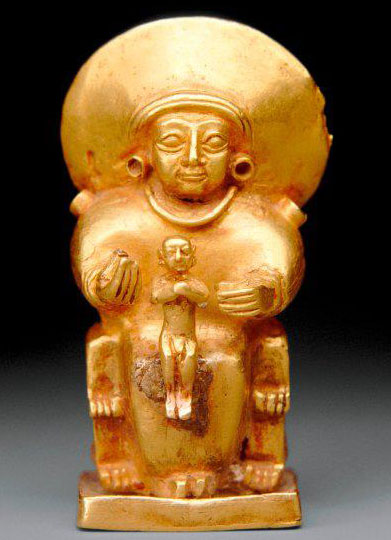
Wurusemu (1550-1200 BCE), The Metropolitan Museum of Art
of the Hittites and the Egyptian
Hathor
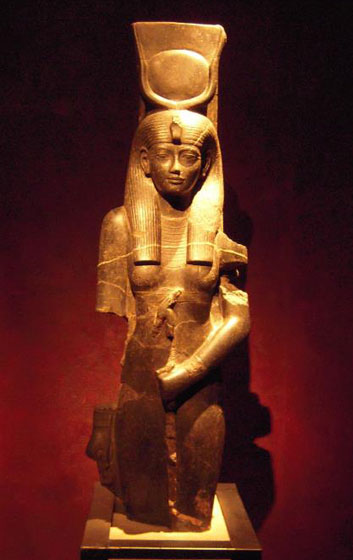
Hathor, Museo Egizio, Torino
among them. But I couldn't
find the figure behind the Statue of Liberty, who, with her sun diadem, is
obviously connected to the sun. She has been variously identified as Columbia
personifying the United States, modeled after the sculptor Frédéric Bartholdi's
mother or an emancipated African slave, or –– of course –– the Roman goddess
Libertas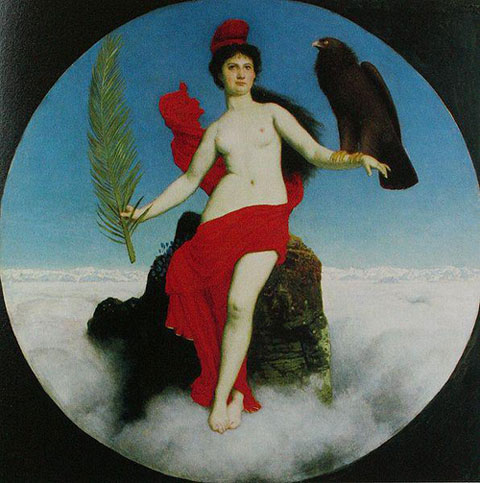
Arnold Böcklin, Die Freiheit (1891).
But none of these explain the rays of sun on her head.
There is the
Colossus of Rhodes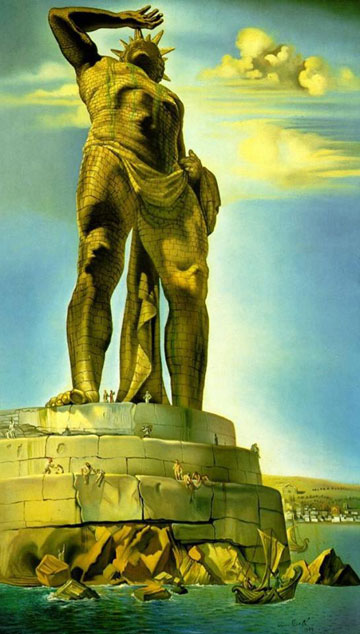
Salvador Dalí, The Colossus of Rhodes (1954)
, one of the Seven
Wonders of the Ancient World, said to have represented Helios. But Helios is
one among other male sun deities such as Apollo and Mithra. The intended effect of
the two giant statues may be the same, but how to explain the sex change?
The
breakthrough came when I returned to Sir James George Frazer's The Golden
Bough for
information on pre-Christian customs that influenced the modern celebration of
Easter:
|
“Another
one of those gods whose supposed death and resurrection struck such deep roots
into the faith and ritual of Western Asia is Attis. He was to Phrygia what
Adonis was to Syria. Like Adonis, he appears to have been a god of vegetation,
and his death and resurrection were annually mourned and rejoiced over at a
festival in spring. Attis was said to have been a fair young shepherd or
herdsman beloved by
Cybele
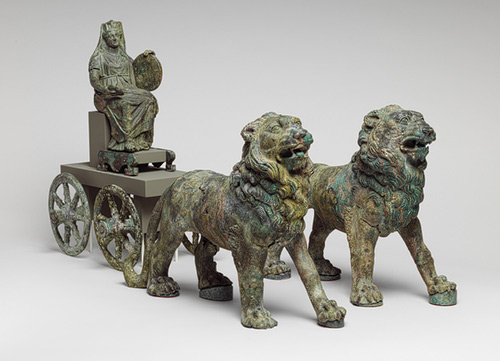
Cybele on a cart drawn by lions (2 century CE), Roman, The Metropolitan Museum of Art
, the Mother of the Gods, a great Asiatic goddess of
fertility, who had her chief home in Phrygia. Some held that Attis was her son.
His birth, like that of many other heroes, is said to have been miraculous. His
mother, Nana, was a virgin, who conceived by putting a ripe almond or a
pomegranate in her bosom.
“Two different
accounts of the death of Attis were current. According to the one he was killed
by a boar, like Adonis. According to the other he unmanned himself under a
pine-tree, and bled to death on the spot. The latter is said to have been the
local story told by the people of Pessinus, a great seat of the worship of
Cybele, and the whole legend of which the story forms a part is stamped with a
character of rudeness and savagery that speaks strongly for its antiquity."
|
|
Google
image search yielded the above, a statue of Attis wearing a sun diadem, at the
shrine of Magna Mater (the Great Mother = Cybele), Ostia, near Rome
(the original statue
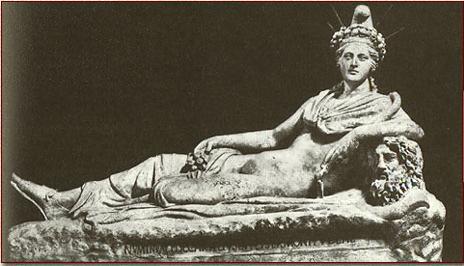
Attis at the Vatican Museum
is in the Vatican Museum). The reclining deity holds a pomegranate in his hand.
The symbolism is clear: Attis’s resurrection represents the return of the season of
fertility; it was eating of this fruit that condemned Persepone to her
amphibious existence –– spending half a year underground and the other half
above, mirroring the cycle of growth and the decline of vegetation.
Worship
of Cybele was brought to Rome during the Second Punic War (218 – 201BCE), and
her annual festival, including the celebration of the resurrection of her consort
Attis, was celebrated at roughly the same time as the later Christian celebration
of Easter.
Although the Magna Mater Attis wears a sun diadem as
a sun deity, he is more often
represented
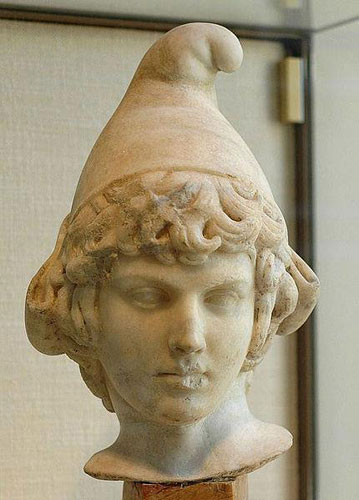
Attis as Youth (2nd c. CE), Cabinet des Médailles, Paris wearing a
Phrygian cap
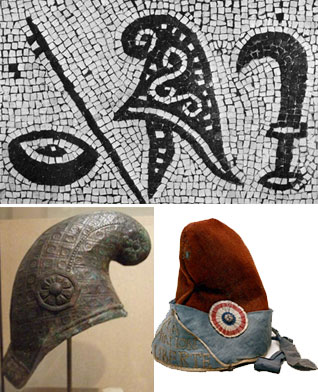
Phrygian caps
–– which
happens to be the headgear of choice of the goddess Libertas. It is easy to imagine
that the sculptor Bartholdi had originally put a Phrygian cap on his Liberty. But
the figure of
Liberté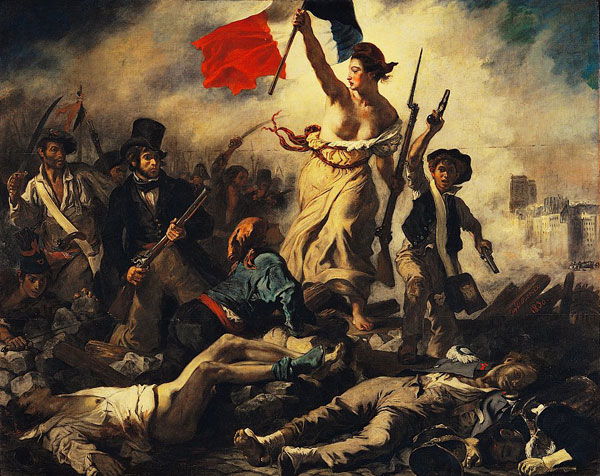
Eugène Delacroix, Liberty Leading the People (1830) and her Phrygian cap had become solidly associated with
the nation of France via the figure of Marianne. Her presence at the port of
entry would have been, at best, confusing to European immigrants. So, in order
to avoid offending the American national sensibility, Bartholdi looked for an
alternative headgear for this gift to the United States.
Bartholdi must have been familiar with the statue of
the reclining Attis –– here wearing a sun diadem. Bartholdi could have even
been led, via Attis, to let his Liberty assume a similar pose –– wearing a
sun diadem, holding a torch above her head –– as Colossus. It was not much of
an artistic license Bartholdi took.

